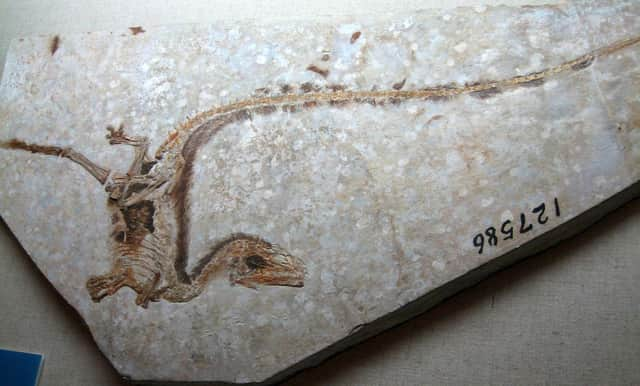Dinosaurs: How new research is helping shed fresh light on long extinct species (like revealing the colour of their feathers) – Professor Mike Benton


Since 1840, palaeontologists have collected millions of fossils, and tried to recreate what fossilised creatures would have looked like when they were alive.
This task is significantly easier when fossils come from a site of ‘exceptional preservation’ where fossils are retained in amazing detail. An example is the Rhynie Chert from Rhynie in Aberdeenshire, where plants and wee beasties were immersed in volcanic springs that infiltrated their internal organs to capture minute cell details and insects on plant stems.
Advertisement
Hide AdAdvertisement
Hide AdBut we are not always as fortunate, and many sites and fossils show far less detail.
With dinosaurs, for example, our knowledge is mostly gathered from just their skeletons or even a few bones. However, using new technology, we’re discovering far more about the prehistoric giants.
In 2010, I was among a team of researchers in China and the UK who were the first to identify the colour of dinosaur feathers. Feathers and hairs get their colours from melanin pigments, and each different melanin is contained in different-shaped capsules within the feather’s structure.
When new fossils from China showed that, just like birds, dinosaurs also had feathers, we set about our analysis. By looking at the feather structures of small dinosaurs, we unearthed the original coloured pigment capsules.
When we examined the turkey-sized dinosaur, Sinosauropteryx, we were able to determine it was ginger all over, with a ginger and white stripy tail. There have since been hundreds of studies on preserved skin, armour plates and feathers.
Further technology to discover details of ancient fossils is now being used by Davide Foffa, a research fellow at the National Museum of Scotland. His focus is on reptile fossils found in Elgin, where the fossils are holes in the rock with some soft bone remaining.
Using an X-ray scanner called a ‘computed tomography’ scanner at the University of Edinburgh, Davide creates 3D renditions of the fossils. By marking areas of bone and rock in these images, a jigsaw puzzle emerges to recreate a skeleton.
Delicate bones hidden to the eye can now be seen. This is important when studying slender beasts that, while only the size of a jumping hare, could have significant bearing on our knowledge on the origin of dinosaurs.
Advertisement
Hide AdAdvertisement
Hide AdWith ever-growing numbers of fossils to study and increasingly advanced technology, such as scanners, allowing us to extract unexpected details, it is an exciting time for palaeontologists.
The power to model the appearance of these ancient beasts means we can uncover more about their way of life. It’s no longer the guesswork relied on by Hugh Miller; we have science and kit which are increasingly bringing these mysterious beasts back to life.
Mike Benton is a professor of vertebrate palaeontology and head of the world-leading Palaeobiology Research Group at the University of Bristol and a fellow of the Royal Society of Edinburgh. The RSE is Scotland's national academy, bringing great minds together to contribute to the social, cultural and economic well-being of Scotland. Find out more at rse.org.uk and @RoyalSocEd.
A message from the Editor:
Thank you for reading this article. We're more reliant on your support than ever as the shift in consumer habits brought about by coronavirus impacts our advertisers.
If you haven't already, please consider supporting our trusted, fact-checked journalism by taking out a digital subscription.
Comments
Want to join the conversation? Please or to comment on this article.
